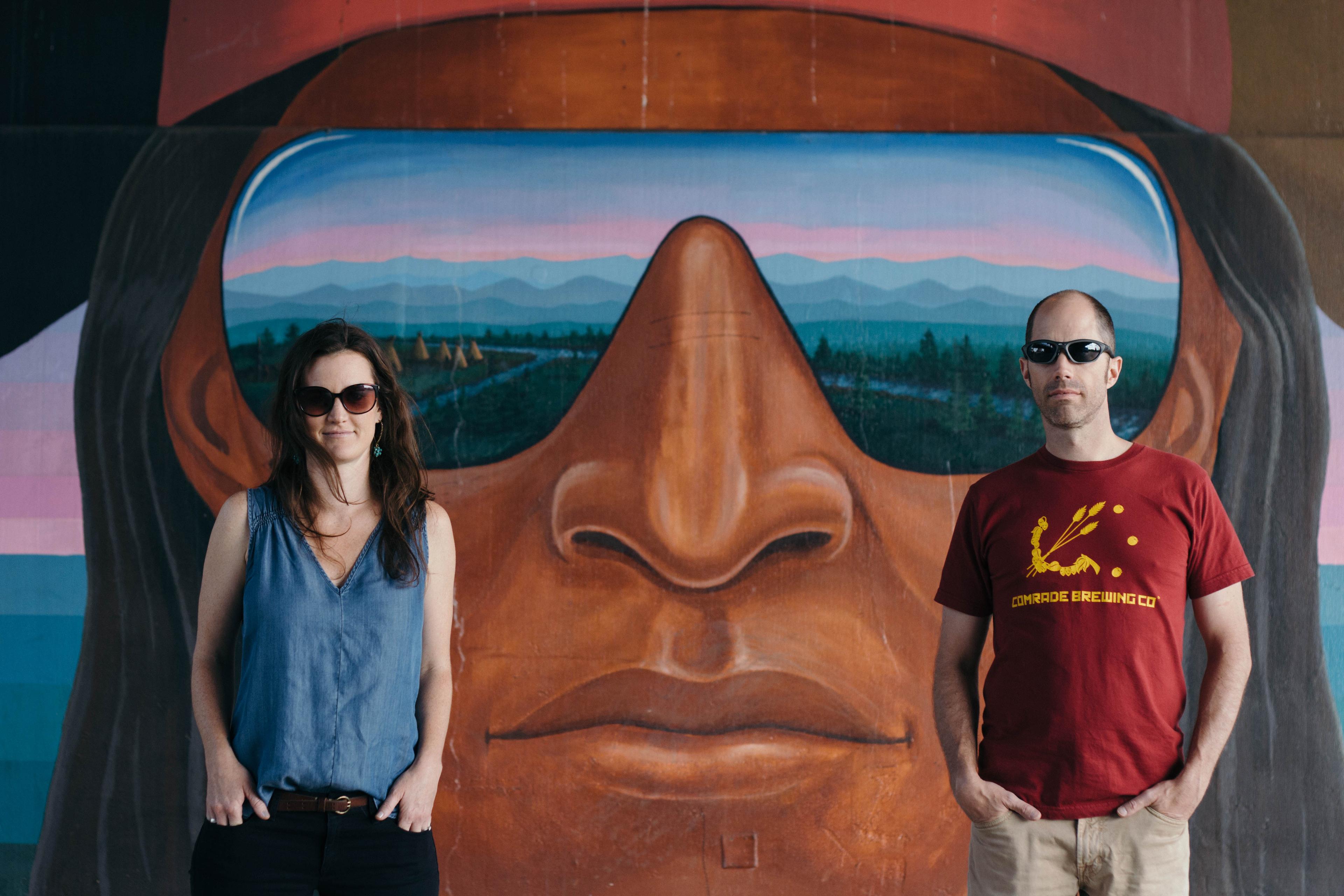

Julie North first discovered the mural, above, of three men's faces wearing sunglasses more than 20 years ago. It was during an elementary school trip to Elitch Gardens Theme and Water Park.
“Ever since then, I’ve been in awe of not only that mural but all the murals in the Denver metro area,” North said.
In fact, part of the public art mural she's talking about -- created in 1999 by artist Emanuel Martinez -- made its way into North’s recent engagement shoot with her fiance, Brendan Keeley.
“We wanted to show some of our guests coming from other states and countries what our city has to offer,” North said. “We wanted to share the flavor of Denver and what is being portrayed in the beautiful artwork.”
North got in touch with us through our Public Insight Network where we recently asked for your thoughts on whether you support funding public arts.
- Let us know: What does public art mean to you?
We also asked for your photos of pieces of art that have caught your attention. We received a lot of responses and photos, including North’s. Her's and two others really stood out, so we put them in a slideshow, below. Now it’s your turn: Vote for one of the three images in the slideshow by writing a comment below the story.
Other Questions We're Asking:
Do you support public money going to the arts?
We heard a wide range of opinions on this question.
North says public funding for the arts is an investment in different communities. And she sees public art, like the mural by Emanuel Martinez, as a reason to get out and explore.
“Public art creates a sense of place, pride and purpose,” North said. “There are so many neighborhoods in the Denver area that I didn't even know existed. Public art provides a transition from one neighborhood to another.”
On the other hand, Christian Matthews of Fort Collins said he opposes tax dollars paying for the arts. He thinks that money should go to other needs like roads, bike lanes and to make spaces more accessible for people with disabilities.
“I see this as us having our priorities in the wrong place,” Matthews said. “Visual art isn't as critical compared to our infrastructure system. If people want art, raise the funds yourselves and put it on private property.”
Dan Barker of Greeley believes art has played a part in revitalizing his city’s downtown. He points to Greeley’s public art program, which -- like similar ordinances in other cities -- sets aside one percent of the budgets for municipal construction projects and dedicates that money to public art.
“We need the depth of culture that will bring companies to our city and region, which brings new jobs,” Barker said. “Communities in northeast Colorado struggle to attract companies and employment. City supporters work hard to show that Greeley is more than a cowtown.”
Are you curious about a piece of public art?

More than 20 large sculptures shaped like hearts pepper the streets of Loveland. The first time Bridget Young drove through town, they caught her eye.
Young lives in Lafayette, and her two sons attend Colorado State University in Fort Collins. So when she passes through Loveland on her way to visit them, she sees the hearts.
"It is intriguing,” Young said. “Every time we drive through, we look for these and we ask our family members to point out their favorite ones. And I was just curious what the story behind them was.”
So we looked into it. The sculptures are part of a program called "City With Heart" that the Chamber of Commerce oversees. President and CEO Mindy McCloughan calls Loveland the "Sweetheart City."
“So hearts are a natural fit for the community,” McCloughan said. “Businesses love to pick up that theme and then put (on) their own distinctive art work or creative design.”
Businesses and groups buy these large, white fiberglass hearts for $3,500. Then the program pairs them with an artist to create the design, and then the finished heart gets installed outside the building. You’ll find the sculptures near banks, churches, auto shops and more.
The Chamber of Commerce doesn't make much of a profit off the program, so it’s more about quality of life and supporting Loveland’s artist, McCloughan says. Most of the money goes to cover the cost of the actual hearts and shipping them. About $500 goes to the artist for supplies and compensation.
“They do this for the love and then as well as getting their name out there, so it’s also notoriety,” McCloughan said. “To pay them more, we’d have to mark up the price of the heart. And people just don’t want to pay that much for a heart.”
But if businesses want a design that requires more work, they do pay artists more.
So what piece of public art in Colorado do you want to know more about? Vote for one of these three images in the slideshow above by writing a comment below.









